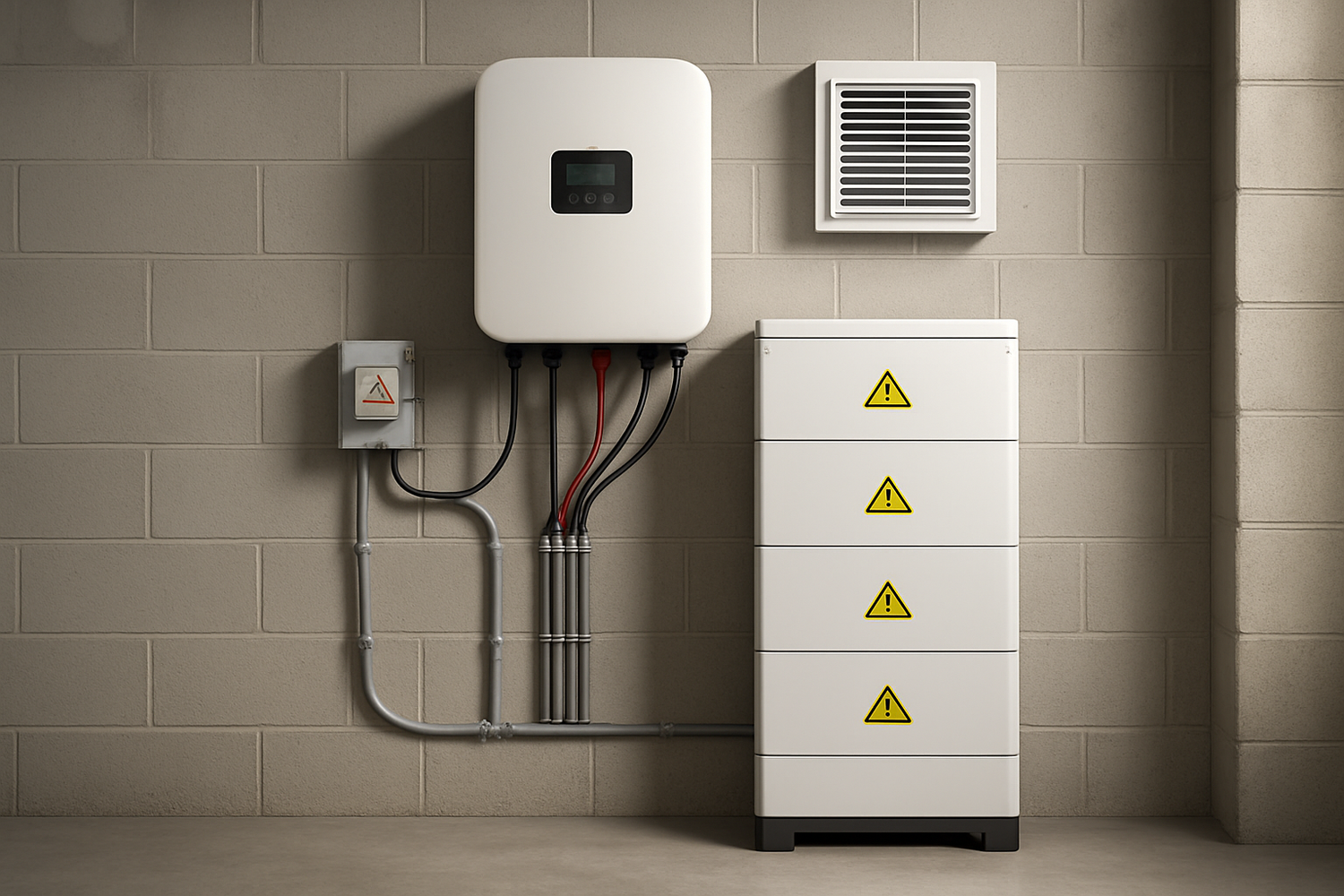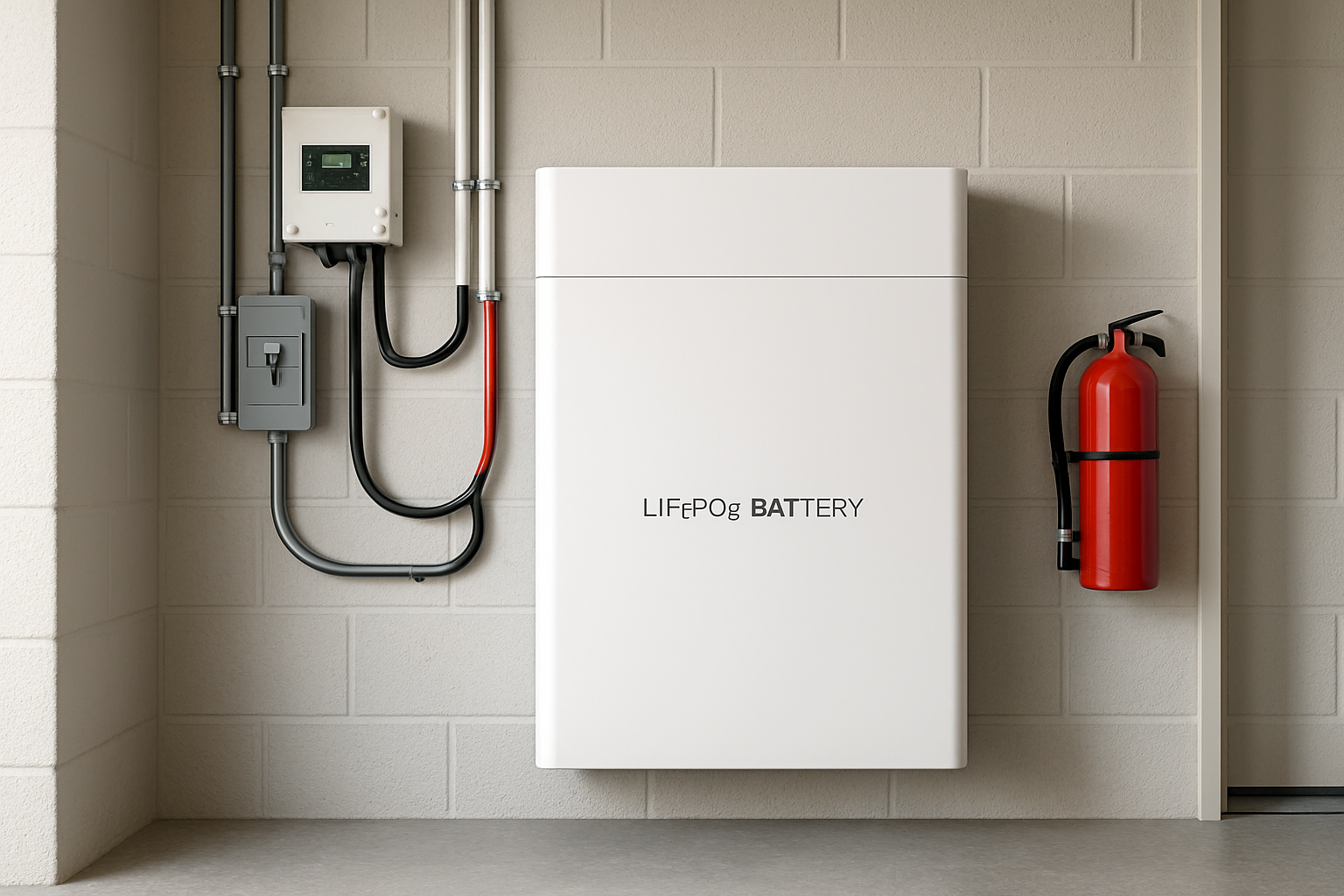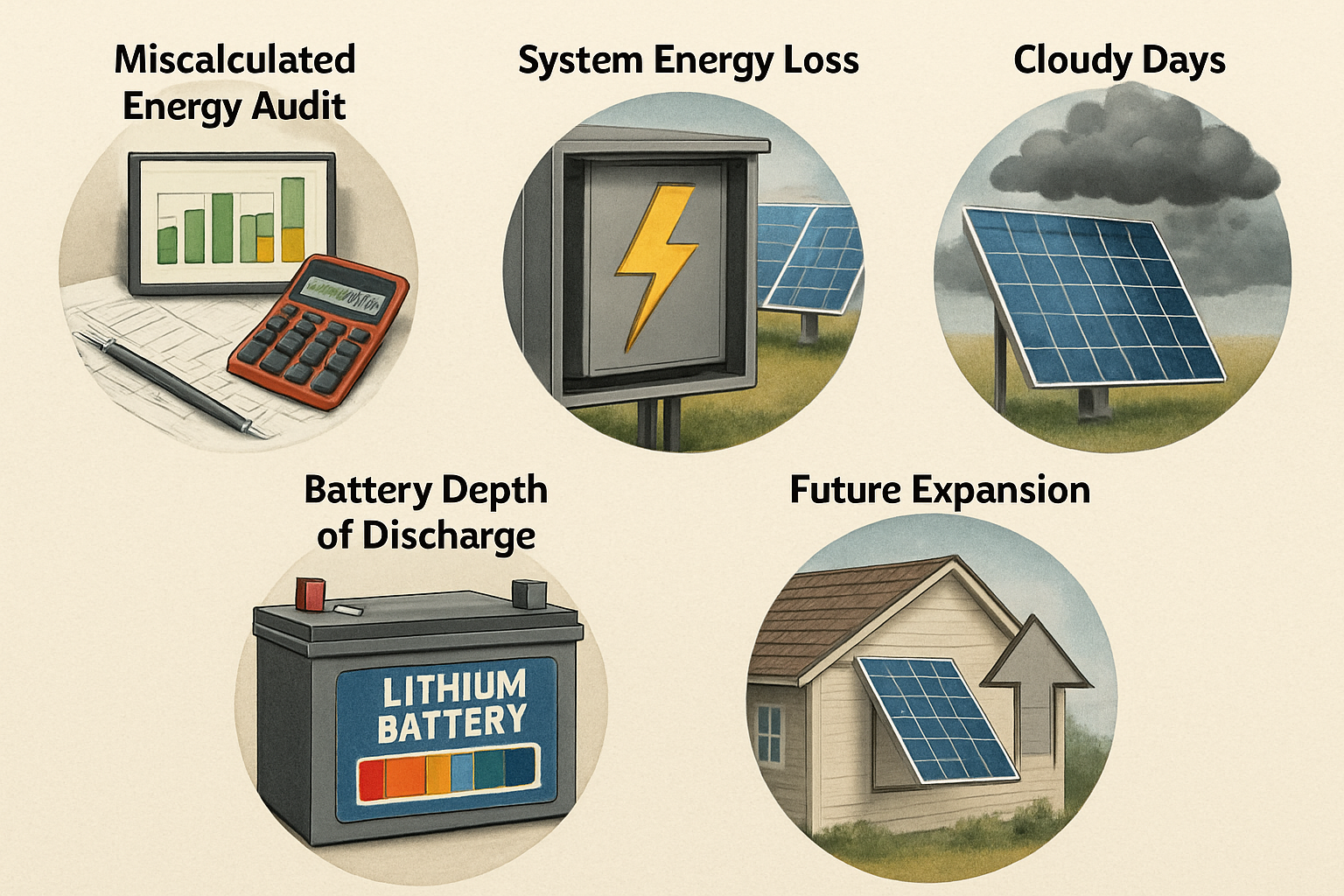Battery energy storage is a cornerstone of modern energy independence. From powering an off-grid cabin to providing backup for a family home, these systems offer reliability and control. But with this great capability comes a great responsibility: ensuring safety. Understanding and mitigating fire risks is not just a technical detail; it's fundamental to the long-term success and security of your energy system.
This manual provides a thorough look at battery fire safety. We will cover the causes of battery fires, critical prevention measures that start with component selection, and best practices for installation and ongoing maintenance. The goal is to equip you with the knowledge to operate your energy storage system with confidence and peace of mind.
Understanding the Root Causes of Battery Fires
A fire requires three elements: fuel, oxygen, and an ignition source. In a lithium-ion battery, the flammable electrolyte can act as the fuel. The primary ignition source is a complex process known as thermal runaway.
What is Thermal Runaway?
Think of thermal runaway as a chain reaction. It begins when a single battery cell overheats due to a fault, such as an internal short circuit. This initial heat triggers a chemical reaction that generates more heat. The rising temperature causes adjacent cells to overheat and fail, creating a domino effect that can quickly spread through the entire battery pack, releasing flammable gases and potentially leading to a fire.
Understanding this process is the first step in prevention. For a deeper technical explanation, see our information on How to Prevent Thermal Runaway in a Deep Cycle Lithium Battery.
Common Triggers for Battery Failures
Several conditions can initiate the failure that leads to thermal runaway. Awareness of these triggers is crucial for both battery fire safety and system longevity.
- Mechanical Damage: Dropping the battery, punctures from improper handling, or excessive vibration can damage the delicate internal structures that separate the anode and cathode, causing an internal short circuit.
- Electrical Abuse: Consistently overcharging a battery, discharging it too deeply, or drawing too much current can put immense stress on the cells. This stress degrades the components and significantly increases the risk of failure.
- Thermal Stress: Storing or operating batteries in excessively high temperatures accelerates chemical degradation and can push a cell toward thermal runaway.
- Manufacturing Defects: Microscopic impurities or flaws introduced during production can create weak points inside a cell. Over time, these defects can lead to an internal short circuit, even under normal operating conditions. The International Energy Agency (IEA) notes that improved labeling and tracking of battery components can "enhance safety by better preventing fire hazards and explosions".
Prevention Starts with Selection and Design
The most effective safety strategy is proactive. Your choices in battery chemistry, system components, and suppliers have the greatest impact on the overall safety of your energy storage system.
Choosing the Right Battery Chemistry: The LiFePO4 Advantage
Not all lithium-ion batteries are the same. The chemistry of the cathode material plays a significant role in its stability and safety profile. Lithium Iron Phosphate (LiFePO4) batteries are widely recognized for their superior safety. The phosphate-based chemistry has a stronger molecular bond, making it far more resistant to thermal runaway compared to other common chemistries like Nickel Manganese Cobalt (NMC) or Lithium Cobalt Oxide (LCO).
Our focus on LiFePO4 technology for products like our high-performance lithium batteries and integrated home energy storage systems is a direct result of its robust safety characteristics. For a detailed comparison, explore LiFePO4 vs. Other Chemistries: Which Is Safest From Fire?
| Feature | LiFePO4 (LFP) | NMC | LCO |
|---|---|---|---|
| Thermal Runaway Temp. | ~270°C (518°F) | ~210°C (410°F) | ~150°C (302°F) |
| Cycle Life | High (3000-6000+ cycles) | Moderate (1000-2000 cycles) | Low (500-1000 cycles) |
| Safety Profile | Excellent | Good | Fair |
The Role of the Battery Management System (BMS)
The BMS is the brain of your battery pack. This sophisticated electronic circuit is a non-negotiable safety component. Its primary functions include:
- Monitoring: Continuously tracks voltage, current, and temperature of individual cells.
- Protection: Prevents overcharging, over-discharging, and overheating by disconnecting the battery if parameters exceed safe limits.
- Balancing: Ensures all cells in the pack are at an equal state of charge, which maximizes capacity and lifespan.
A high-quality BMS is your first line of defense against electrical abuse, one of the primary causes of battery fires.
Vetting Your Supplier for Quality and Safety
The quality of your battery is only as good as the manufacturer that produced it. Reputable suppliers adhere to stringent manufacturing processes and international safety certifications like UL and IEC. According to the International Renewable Energy Agency (IRENA), uncertainty about safety standards can limit the deployment of new battery technologies. Choosing a supplier with a proven track record and transparent quality control helps build confidence and ensures you receive a reliable product. For guidance on what to ask, refer to our checklist for vetting lithium battery manufacturers.
Safe Installation and Siting Practices
Proper installation is just as important as component selection. A poorly installed system can create hazards, regardless of the quality of the equipment. Following established fire prevention guidelines is essential.
Best Practices for Battery Installation
Where and how you install your battery system matters. Careless installation is a leading cause of problems. To avoid common issues, review these 7 Common Mistakes in Solar Battery Installation That Risk Fires.
- Location: Install batteries in a cool, dry, and well-ventilated space. Avoid areas with direct sunlight, high humidity, or flammable materials. Garages or dedicated utility rooms are often suitable.
- Clearance: Maintain adequate space around the battery and inverter for airflow, as specified by the manufacturer. This prevents heat buildup.
- Wiring: Use the correct gauge of wire for the current, ensure all connections are tight and secure, and install appropriate overcurrent protection like fuses or circuit breakers. For specific instructions, consult a resource like A Pro's Guide to Safely Installing a 12V LiFePO4 Battery.
Understanding and Complying with Fire Codes
For larger home energy storage systems, local building and fire codes often apply. In the United States, NFPA 855 is the primary standard for the installation of Energy Storage Systems (ESS). It provides requirements for location, spacing, fire detection, and suppression. While it can seem complex, understanding the basics is important for a safe and compliant installation. You can learn more by reading our overview that helps in Demystifying NFPA 855: Fire Codes for Energy Storage Solutions.
Environmental Considerations
The operating environment directly impacts battery health and safety. High humidity is a particular concern. An IRENA report on renewables notes that high humidity can lead to condensation, increasing the likelihood of corrosion and electrical faults which, in extreme cases, can cause fires. Ensuring your installation location is protected from moisture is a critical safety step. Furthermore, maintaining optimal environmental conditions is key to system longevity and efficiency, a topic covered in our ultimate reference on solar storage performance.
Ongoing Operation and Emergency Preparedness
Once your system is installed, safety becomes a matter of routine awareness and preparedness. A well-maintained system is a safer system.
Routine Maintenance and Monitoring
Modern battery systems require minimal maintenance, but they are not "set and forget."
- Visual Inspections: Periodically check the battery and connections for any signs of corrosion, damage, or swelling of the battery case.
- System Monitoring: Keep an eye on the performance data from your inverter or monitoring app. Any sudden changes in capacity or efficiency could indicate an issue.
Regular checks can help you determine if your home battery storage system is a fire hazard before a serious problem develops.
Creating a Fire Safety Plan
Preparedness is key. Your plan should include having the correct type of fire extinguisher nearby—typically a Class ABC dry chemical extinguisher—and ensuring everyone in the household knows how to use it and when to evacuate. A comprehensive checklist can help you cover all your bases. We recommend reviewing Your Essential Fire Safety Checklist for Lithium Battery Storage.
Recognizing Warning Signs
A failing battery often provides warning signs before a critical event. Be alert for:
- Unusual Odors: A sweet, metallic, or acrid smell near the battery can indicate venting of electrolyte gases.
- Sounds: Hissing or popping noises from the battery pack are a serious red flag.
- Heat: The battery casing feeling unusually hot to the touch.
- Swelling: Any visible bulging or deformation of the battery enclosure.
If you notice any of these signs, shut down the system if it is safe to do so and contact a qualified professional immediately.
Building a Resilient and Safe Energy Future
Achieving energy independence through solar and storage is an empowering step. Ensuring its safety is fundamental to its success. By prioritizing high-quality components with stable chemistries like LiFePO4, adhering to professional installation standards, and practicing diligent monitoring, you build a system that is not only powerful but also profoundly safe.
The journey to a reliable, self-sufficient energy solution is built on a foundation of knowledge and responsibility. With the right approach, you can be confident that your investment in energy storage is secure, effective, and safe for years to come.
Disclaimer: The information provided in this document is for educational purposes only. It is not intended as a substitute for professional engineering, electrical, or legal advice. Always consult with qualified professionals and adhere to local codes and regulations when designing and installing an energy storage system.





Leave a comment
All comments are moderated before being published.
This site is protected by hCaptcha and the hCaptcha Privacy Policy and Terms of Service apply.